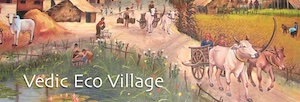A wildfire burned our surrounding forests. We left this burned section intact for a year before starting a clean-up and forest nourishment program. We will rehabilitate the soil by building berms (water lenses). A portion of the burnt trees will be left as bio mass for the depleted forest floor and for ground stability. We will arrange to cut trees without causing mass destruction.
Not all burned trees die. Whether they survive depends on many factors, including the thickness of its bark, and how far the burn travelled into a tree’s living layer. Even if they eventually die from fire damage, burned trees can still play a key role in the ecosystem for the years they remain standing.
Many species and ecosystems evolved in tandem with fire and benefit from a landscape left undisturbed after a burn.
Green trees in fire zones can offer refuge for wildlife, and burned, dead trees provide nesting spots for birds like tree swallows. They also hold water in the soil and shield the earth from the drying effects of wind and sun.
Milling Burned Trees
We are researching and testing the best ways of using deeply burned trees for firewood and building materials. Trees can be milled up to 2 years after they are burned (end of 2025)
Regenerating the forest with cows
Managed grazing cows helps regenerate the burned forests. Even deserts can be transformed into bio-diverse productive land utilizing cows.
